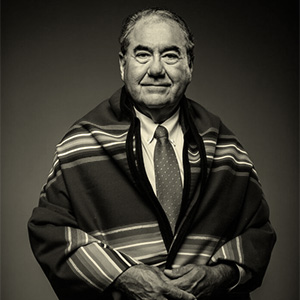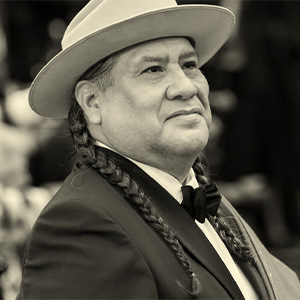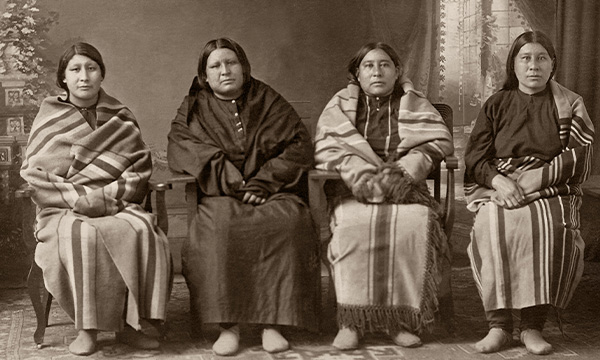The 1920s were a time of unprecedented transformation in the United States, characterized by economic growth, cultural shifts, and societal change. Amidst the glamor of the Roaring Twenties, an alarming tale of greed, exploitation, and violence unfolded within the Osage Nation, revealing the devastating consequences of newfound wealth — a period of time known as “The Reign of Terror.”
In this article, we’ll delve into the history of The Reign of Terror and understand its origins. Together, we’ll learn about the Osage Nation’s oil wealth; the motivations of evil men such as William K. Hale; the vast conspiracy of murder, lies, and legislation that made it all possible; and how the Osage people have, despite this tragedy, remained a strong and culturally rich people.
Understanding the Osage Nation’s Oil Boom and Wealth
Nestled in the heart of Oklahoma, the Osage Nation found itself at the epicenter of an unexpected windfall – vast oil reserves beneath their land. The discovery of oil ushered in an era of unparalleled prosperity for the Osage people. Seemingly overnight, they became some of the wealthiest individuals in the world, their lives transformed by the oil riches that lay beneath their feet.
The rights to these oil riches were granted in the form of “headrights.” When a member of the Osage Nation was given the right to their portion of this massive oil wealth, it was known as their headright, and would be passed down throughout their family’s generations. In turn, this made the holders of those headrights extremely rich — to the tune of $400,000/yr tax free in today’s dollars — and a target for those seeking access to this newfound wealth.
“... Back in those days, the statistics show that every Osage man, woman, and child was receiving the equivalent of $400,000 per year tax free. There was no loans going on and there was no financial education going on. There was none of that financial literacy that they talk about now, which we are now implementing through here. Can you imagine if we knew how to open bank accounts for ourselves instead of through the guardian system? Or if we knew how to get more than 1/8ths or 3/16ths royalties? If we did what a lot of companies do with a lot of countries, joint ventures, 51-49? But, instead, Continental Oil Company — now Conoco, no “L” now — ConocoPhillips, Phillips Petroleum, Getty Oil — all these large companies started right here.”
— Chief Geoffrey Standing Bear
Chapter 2
This newfound wealth of the Osage Nation was both a blessing and a curse. On one hand, it provided opportunities for a better quality of life for tribal members. On the other hand, it painted a target on their backs. As the Osage people's affluence became widely known throughout Oklahoma and the United States as a whole, jealousy and greed began to fester among outsiders who saw an opportunity to exploit their wealth.
What Were Guardians and What Role did They Play in the Reign of Terror?
Soon after the full breadth and depth of their oil wealth became known, the United States government unjustly ruled that the Osage people were “incompetent” and weren’t capable of handling and managing their own vast wealth and, as such, should have mandated “guardians” appointed to help them protect their headrights.
“We were ‘incompetent.’ Well, I mean, that’s what they state we are legally. We’re ‘incompetent.’ And, actually, if you want your money to stay in trusts now — like your oil and gas royalties — as an Osage, and you want it to not be taxed, you still just say you’re ‘incompetent.’ So I’m ‘incompetent.’ You know, they’ve changed laws since then, so it’s been a lot better as far as the Osage being in control of their own headright and oil and gas royalties and such.”
— Yancey Red Corn
Chapter 2
However, the very system designed to protect the Osage people became an avenue for exploitation during the Reign of Terror. Unscrupulous individuals, driven by greed and power, manipulated the guardianship system to their advantage. They would position themselves as guardians, gaining control over the wealth and financial affairs of their charges, many of whom were vulnerable members of the community. This allowed these perpetrators to exert influence over decisions that had far-reaching consequences, including the management of oil headrights and inheritance matters.
“... A lot of land that was stolen. Him and his brother, Wakon Iron (or George Red Corn), their guardian stole a bunch of land from them and sold it. They had a lot of money. They just were taken advantage of by their guardian…”
— Yancey Red Corn
Chapter 2
These individuals colluded with other outsiders who ingrained themselves in the Osage Nation — lawyers, doctors, coroners, pastors, police officers, politicians, investigators, and many others — and became involved in the conspiracy to exploit the Osage people's wealth and manipulate their lives.
Who Was William K. Hale and What was his Role in the Reign of Terror?
During this period of murder, betrayal, and corruption, one name stands out above the rest: William K. Hale.
Hale, the mastermind behind the Reign of Terror in the 1920s, was a man who stooped to the lowest depths to exploit the newfound wealth of the Osage people. Among his many calculated tactics, one particularly sinister strategy revealed his willingness to exploit even familial bonds for personal gain. Hale's nephews, Ernest and Bryan Burkhart, would become pawns in his uncle's heartless game.
“What he did was, as the book reports, was a mastermind of one of — if not the largest — conspiracy to deprive an Osage family — extended family — of their headright and their money by intermarrying and using this system here of probate with the courts and the laws of Oklahoma and federal laws to make it legal — except for the murder part — to make the descendants pass and for the headright money to keep flowing to one survivor.
And in that book, and the movie, it’s the surviving sister who was married to Bill Hale’s nephew, Ernest Burkhart, which is another strange situation according to my view. I can’t say everybody agrees with this. But he got out of prison and he was still over there. And my senior advisor, John Williams, who was an advisor on the movie … he told me, he goes, “Oh, I knew Ernest Burkhart.” And he goes “We all knew him over there when we were younger.” So the relationships are complicated. That’s best explained by people from the Gray Horse community.”
— Chief Geoffrey Standing Bear
Chapter 5
Recognizing that marriage into Osage families would grant access to their valuable oil headrights, Hale leveraged Ernest's connection to orchestrate his entry into the community. In a chilling display of manipulation, Burkhart courted and eventually married Mollie Kyle, an Osage woman whose wealth from oil royalties made her the perfect target for Hale's insidious ambitions.
Working together, and shamelessly leveraging the trust Mollie and her family had in them, Hale and Burkhart plotted to systematically murder Mollie and many other members of their family in order to gain direct control of their vast fortune — and profiting every step of the way. Though the sheer scale of Hale’s web of lies will likely never be fully known, the following is a brief overview of the killings orchestrated by Hale, his nephews, and the co-conspirators with whom they schemed:
Anna Brown
In May 1921, Hale enlisted Kelsie Morrison to carry out the murder of Anna Brown, Mollie's sister. Morrison later confessed, revealing that Hale had coerced him by forgiving a $600 debt Morrison owed. Anna's mother, Lizzie Q, inherited half of Anna's oil headrights, only to pass away exactly sixty days later. Her fellow heirs included Mollie, Rita Smith, and Grace Bigheart. Additionally, a few weeks later, Charles Whitehorn, a cousin, was shot and killed.
Anna Sanford
In March 1922, Anna Sanford, who had married Tom McCoy, died under peculiar circumstances. Following Sanford's death, McCoy tied the knot with Hale's niece.
George Bigheart and William Vaughn
During 1923, George Bigheart fell victim to poisoned whiskey, which led to his transportation to an Oklahoma City hospital for treatment. Accompanied by Hale and Ernest, Bigheart requested a meeting with his attorney, William Vaughn. Tragically, Vaughn was found dead on the railroad right-of-way outside Pawhuska, Oklahoma, a day after consulting with Bigheart. Ultimately, Bigheart also succumbed to his ailment.
Henry Roan
In February 1923, another relative, Henry Roan, was discovered shot dead inside his car. Notably, Hale held a $25,000 life insurance policy on Roan. Hale faced subsequent conviction for Roan's murder, despite Hale referring to him as a "good friend" and participating as a pallbearer at Roan's funeral.
Rita Smith and Family
March 1923 saw the bombing of the Smith family's home, resulting in the deaths of Rita Smith, her husband, and a housekeeper. The tragedy granted Mollie the inheritance of Rita's oil headrights.
As the web of his malevolent scheme began to unravel, it was clear that his reign of manipulation, violence, and exploitation would not go unchecked and Hale's once-untouchable veneer began to crack as undeniable evidence mounted against him. The FBI’s investigation exposed the vast network of conspirators and the extent of his manipulation, casting a stark light on the terror he had inflicted upon the Osage community. The FBI's unrelenting pursuit ultimately led to his indictment and subsequent trial. In 1929, William K. Hale was convicted of the murder of his cousin, Henry Roan, securing a long-awaited moment of justice for the victims of his insidious plot.
Hale was sentenced to life in prison but was paroled on July 31, 1947. He lived out the rest of his days working as a ranch hand in Montana and finally died in a nursing home in Phoenix, Arizona in 1962. His only regret, as quoted by a relative during a visit was: “If that damn Ernest had kept his mouth shut we'd be rich today.”
How Did the Reign of Terror Come to an End?
For years, the Reign of Terror and the countless deaths continued unabated as even police officers and investigators were in on the massive conspiracy. However, once the FBI became aware of the killings and web of lies — and finally listened to the Osage people who had been trying to alert authorities for years — their involvement turned the tides and the conspiracy began to unravel.
The culmination of investigations, legal proceedings, and the unrelenting efforts of both the Osage people and those seeking justice ultimately led to the end of this era of horror.
The turning point came with the intervention of the Federal Bureau of Investigation (FBI) under the leadership of J. Edgar Hoover. The FBI's involvement marked a new phase in the pursuit of justice, as they meticulously gathered evidence, interviewed witnesses, and pieced together the intricate puzzle of the conspiracy.
The uncovering of the conspiracy not only shed light on the extent of the crimes committed but also initiated a wave of legal proceedings. Many of those involved in the Reign of Terror were indicted and brought to trial for their heinous actions. As witnesses testified and evidence was presented, the full scope of the horrors inflicted upon the Osage community was laid bare for all to see. The trials served as a cathartic reckoning, a step towards closure and justice for the victims and their families. With each conviction, the grip of terror began to loosen, and the Osage community slowly began to journey towards healing.
An Indomitable People with an Unbreakable Spirit
Though the Reign of Terror was an indelible blight on the history of Oklahoma, the spirit and resilience of the Osage never wavered. With an unbreakable culture of community and connectedness, the Osage Nation is now sharing their story and culture of their people with the world.
“And I do think, as we’ve talked about the crimes, I just want to make one very important point that I’ve gotten from these relationships today and the people that I know today, which is that an Osage warrior who told me that — one day out at the dance, actually, when I was out with Margie and we were out in Grayhorse, and we were out at the camp, and there were lots of people, and I had been interviewing lots of people. I interviewed an Osage warrior and she had told me, she said, ‘We were victims of these crimes. We don’t live as victims.’
And I think it’s always important in history that we underscore that: that the Osage Nation remains vibrant. It has its own political system to this day. It remains a very strong nation. I always try to make that point as well, that history doesn’t just stop in place.”
— David Grann
Chapter 5
You can learn more about the Osage people, The Reign of Terror, and other aspects of this fascinating story in our topical section “Killers of the Flower Moon.” Titled after the same name as David Grann’s masterful book on the subject, our interviews feature accounts from those closest to the Osage people and this period of Oklahoma history.
Thank you for your time with us in this article today. These pieces and other educational content from Voices of Oklahoma is only made possible through the generous support of readers and listeners like you. Donations of any amount are a tremendous help in ensuring the next generation of Oklahomans has free access to this rich library of state history.


